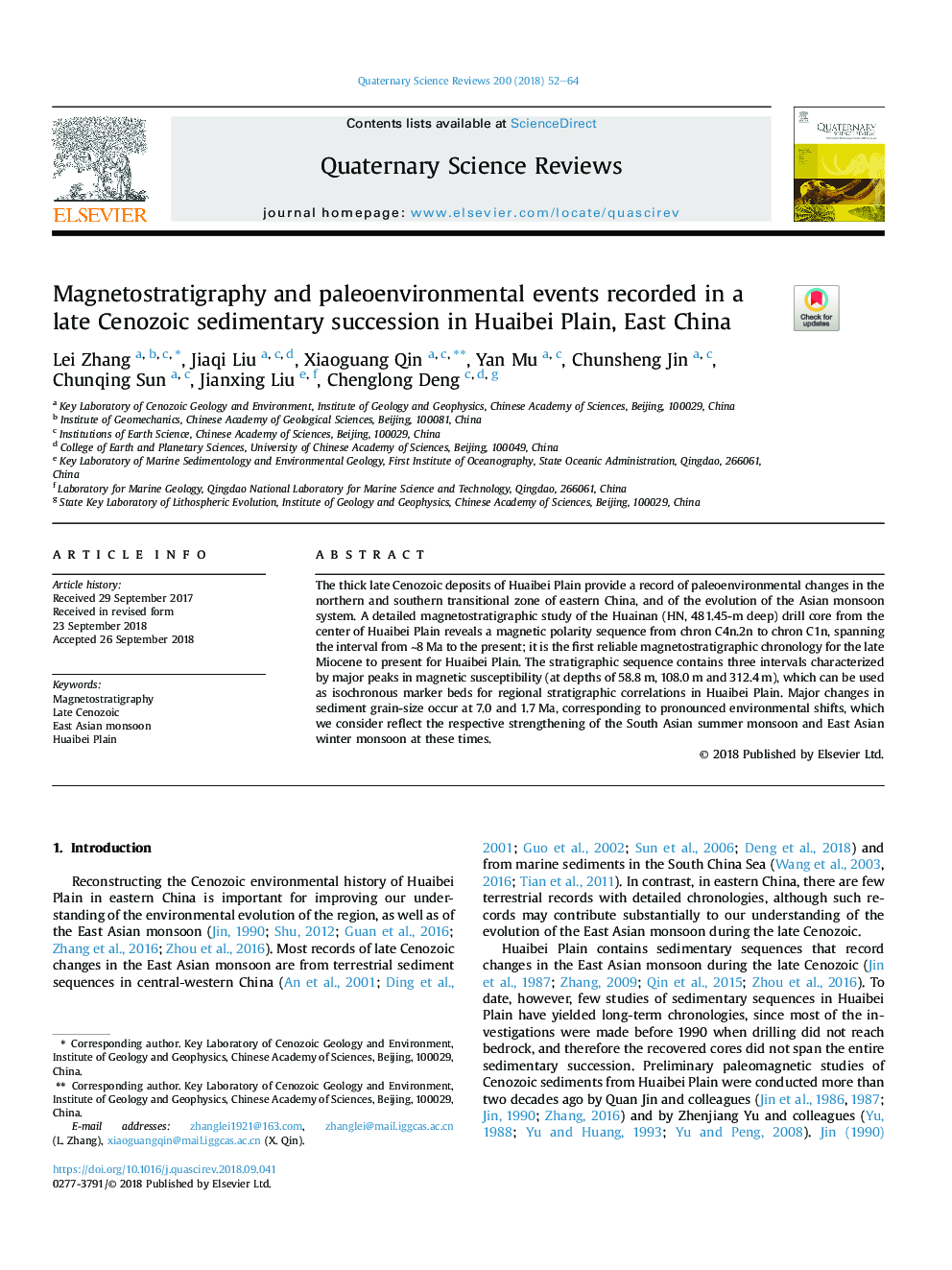| Article ID | Journal | Published Year | Pages | File Type |
|---|---|---|---|---|
| 11010071 | Quaternary Science Reviews | 2018 | 13 Pages |
Abstract
The thick late Cenozoic deposits of Huaibei Plain provide a record of paleoenvironmental changes in the northern and southern transitional zone of eastern China, and of the evolution of the Asian monsoon system. A detailed magnetostratigraphic study of the Huainan (HN, 481.45-m deep) drill core from the center of Huaibei Plain reveals a magnetic polarity sequence from chron C4n.2n to chron C1n, spanning the interval from â¼8â¯Ma to the present; it is the first reliable magnetostratigraphic chronology for the late Miocene to present for Huaibei Plain. The stratigraphic sequence contains three intervals characterized by major peaks in magnetic susceptibility (at depths of 58.8â¯m, 108.0â¯m and 312.4â¯m), which can be used as isochronous marker beds for regional stratigraphic correlations in Huaibei Plain. Major changes in sediment grain-size occur at 7.0 and 1.7â¯Ma, corresponding to pronounced environmental shifts, which we consider reflect the respective strengthening of the South Asian summer monsoon and East Asian winter monsoon at these times.
Related Topics
Physical Sciences and Engineering
Earth and Planetary Sciences
Geology
Authors
Lei Zhang, Jiaqi Liu, Xiaoguang Qin, Yan Mu, Chunsheng Jin, Chunqing Sun, Jianxing Liu, Chenglong Deng,
